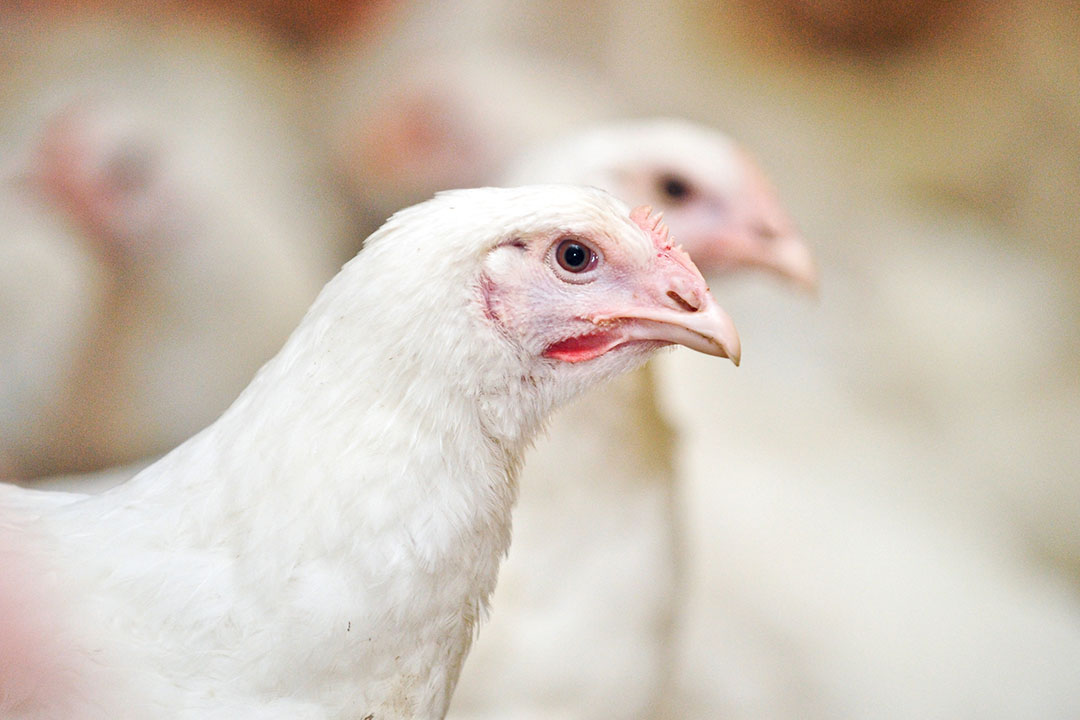Ensuring gut health under every situation

There is a growing need to reduce antibiotic use globally. One key success factor is to ensure a healthy gut – which is the first line of defence of the animals – with a multilevel approach.
Whenever the barrier function is compromised, opportunistic bacteria can cross the epithelial layer and reach the underlying lamina propria. Such bacteria are classically facultative anaerobes belonging to the gram-negative proteobacteria phylum, e.g. Escherichia or Salmonella spp or to the gram-positive Enterococcus spp genus. Pathogen associated molecular patterns expressed by opportunistic bacteria are sensed by the innate immune receptors expressed at the basolateral pole of enterocytes or at the surface of resident immune cells. This sensing triggers the release of pro-inflammatory cytokines that initiate an acute innate immune response. As a result of this acute immune response, feed intake of birds is depressed. In addition, a homeorethic response partitions nutrients away from muscle growth and towards immune organs and inflammation sites. Elevation of the basal metabolism reduces the availability of energy for growth and locomotion. Elevation of the basal metabolism and production of reactive oxygen species by innate immune cells can induce oxidative stress. Collectively, physiological adaptations associated with acute immune responses impair both the rate and efficiency of growth in meat-type birds.
Impaired barrier function of the gut can, therefore, compromise the welfare of birds and the profitability of the poultry farm. This condition, also known as leaky gut, can also contribute to the onset of foot pad dermatitis as a result of the moistening of the litter. Leaky gut is often seen as a secondary condition that results from the damages caused by either Clostridium (necrotic enteritis) or Eimeria spp infections (coccidiosis). Growing evidence originating from mammalian research indicates, in addition, that heat stress and energy density of the diet may compromise the barrier function of the gut by inducing a remodelling of the tight junctions proteins assembly in the small intestine. In the past, antibiotic growth promoters (AGPs) were used in European broiler diets to control the growth of opportunistic bacteria and the inflammatory status of the gut. Nowadays, numerous countries across the world have banned the use of AGPs. Hence, broilers are fed high-density diets devoid of AGPs and housed at high stocking density. Such conditions may favour the onset of intestinal inflammation.
Multilevel approach to tackle challenges
Nutrition
Research on alternative ingredients controlling intestinal inflammation has become prevalent. Several phenolic compounds such as essential oils as well as organic acids have been shown to reduce the growth of opportunistic bacteria in the gut of poultry. Research has, in addition, highlighted the synergistic effect of combining essential oils (Table 1).
As stated earlier, gut inflammation is triggered by impaired gut integrity and may lead to oxidative stress. Hence, control of gut inflammation goes beyond the sole focus on microbiota and should address the physiological effects associated with leaky gut. In that respect, betaine and butyrate are known to influence gut integrity while antioxidants such as vitamin C and polyphenol extracts are known to mitigate the adverse effects of oxidative stress. Oxidative stress may occur when animals are stressed, due to greater activities of the Krebs cycle and the respiratory chain, which increases the risk of mitochondrial uncoupling and formation of reactive oxygen species. The efficacy of such active ingredients is, however, partly conditioned by their release in the right segment of the gut as well as their stability over time and over manufacturing processes. Hence, selecting the correct protection method may be as important for overall efficacy of the nutritional strategy as selecting the correct active ingredient.
Mixscience has developed a two-step in vitro method to simulate the release of the active ingredients over time. Specific pH, temperature, incubation period, enzymes and agitation conditions are chosen in order to mimic the gastric and enteric segments of the avian gastrointestinal tract. Such in vitro models allow to study the effect of fat source and inclusion level on the release kinetics of encapsulated active ingredients (Figure 1).
Figure 1 – Percentage of released active component.

Although the effectiveness of these solutions is recognised, they should not be considered as silver bullets that can provide all the ease of use and efficacy formerly provided by AGPs. As a matter of fact, a multilevel approach is required to tackle the intestinal inflammation challenge. Working on feed formulation can help to minimise bacterial overgrowth by reducing the substrate left for growth in the hindgut. This requires a smart use of commercially available enzymes in a constantly updated and accurate feed formulation system. Mycotoxins in feed ingredients should also be carefully monitored, as their ingestion may lead to immune suppression and higher susceptibility to diseases.
Associated practices
However, the foremost important level is the farm level, where factors favouring intestinal inflammation can be minimised through technical stewardship. Such technical stewardship can be facilitated by user-friendly applications aimed at improving various technical aspects of farm management such as water quality (e.g. Aquascope), food pad dermatitis prevention (Podoscope) or biosecurity during the starting period (e.g. Chickpoint). Another innovative practice is the use of barrier flora in poultry houses that may reduce the occurrence of opportunistic bacteria through competitive exclusion.
Several strategies for success
To conclude, the gut is a key organ for the health and well-being of poultry. In a context of overall reduction of antibiotic use, it is necessary to combine several strategies (well-chosen products, technical management) to ensure gut health in any situation.
Authors: Pierre Moquet, Poultry Specialist and Clémence Messant, Product Manager, MiXscience











